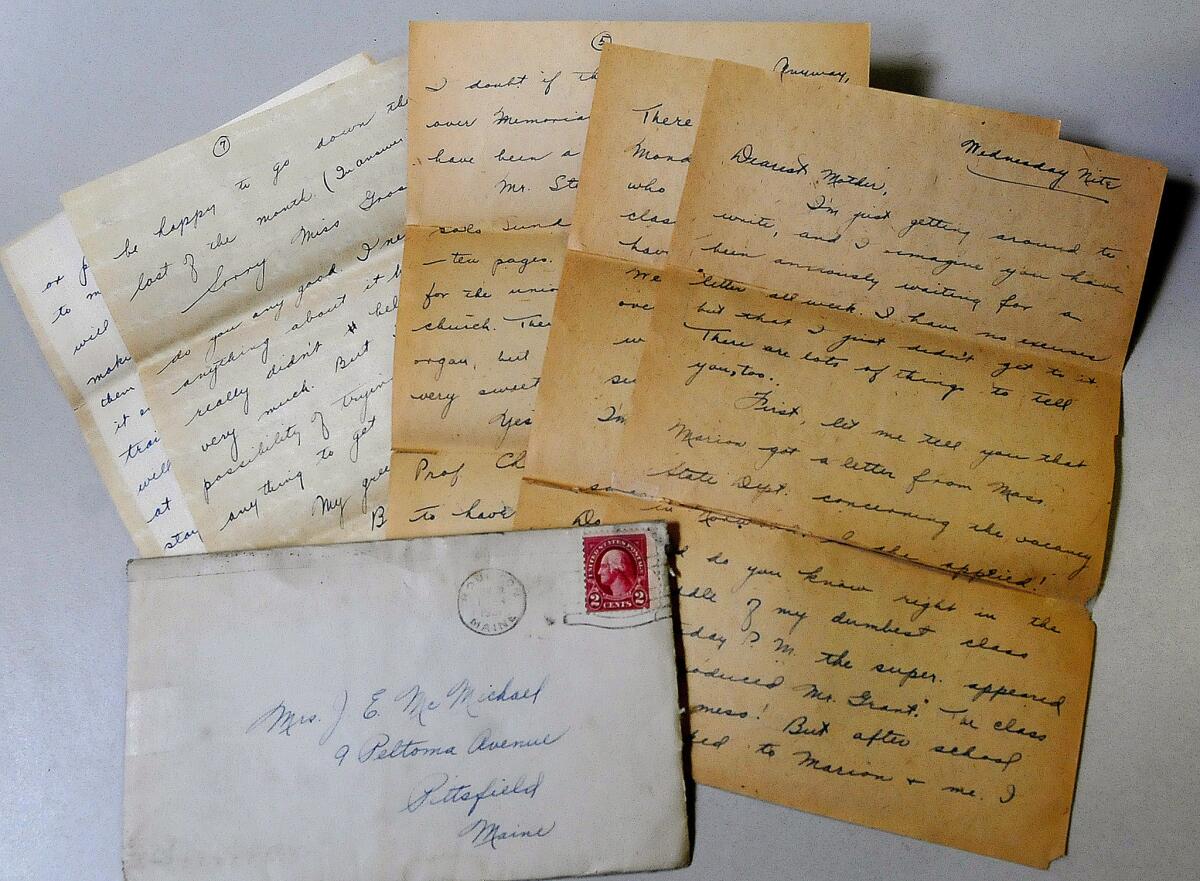Letters from camp, letters from home

My daughter left for camp last weekend: four weeks out of the city with a group of friends she loves. The last thing I said before we dropped her off was to ask if she’d be writing any letters; from the look she gave me, I knew not to expect very much. She, after all, is a digital child: 15 years old, wired to her phone as if it were a part of her anatomy.
Still, one of the appeals of camp (from a parent’s point of view, in any case) is that such devices are forbidden — for one month, anyway, my daughter is unplugged. In that sense, if she wants to reach out, she would have to follow the example of Seymour Glass, who in the novella “Hapworth 16, 1924,” the last piece of fiction published by J.D. Salinger in his lifetime, sends a long letter home to his parents, detailing his frustrations and his predilections, and asking for a wide array of books.
Of course, writing letters is a two-way process, a correspondence in the truest sense. My wife and I confront this reality (or is it an obligation?) every summer when we struggle to find a way to fill our daughter in on the news from home, without seeming pedantic or just plain dull. We’re not alone, apparently, as Dahlia Lithwick acknowledges in a recent essay for Slate.
“Here is the problem in writing letters to your kids,” Lithwick writes, “— perhaps especially as a writer, who has arguably spent her entire professional life writing letters to everyone who isn’t her kids: How do you suddenly start writing in a grand literary fashion to two small people whom, heretofore, you pretty much have only talked to as follows: ‘Did you brush?’”
Lithwick’s kids are younger than mine, but the point resonates. How do you shift gears in a relationship, communicate in the slower medium of the letter when you are used to constant contact, constant conversation, the shorthand of being, always, in touch? How much do you share in a letter that will be read quickly, distractedly? How do you strike a tone that is intimate but also casual at once?
This is the motivation behind one of my favorite literary projects of recent years, the Rumpus’ Letters in the Mail, in which writers including Matthew Specktor, Aimee Bender and Matthew Zapruder produce a piece of correspondence, typed or handwritten, that is then photocopied and sent to a subscriber list. The idea is to take a deep breath, to bring communication back to the personal, to establish the sort of informal and direct bond that letter writing has long required.
Many years ago, just after I got my first computer, I wrote a lot of letters — it was the only time in my life I ever did. Partly, this was an attempt to reach out to distant friends, but even more, it had to do with the pull of the screen and of the keyboard, the irresistible experience of watching my words, in glowing green, scroll down the darkness of a screen and animate it with electric light. I couldn’t get enough … until I did. Once I got used to writing on the computer, I hardly wrote another letter again.
At one point, I — like a lot of others — thought that email might revive the art of writing letters, since we were communicating with each other via text. That this has not happened is one of the truisms of our hyped up age, in which speed trumps substance, and our ability to keep in touch with each other at all hours, through a variety of media, is more of a burden than a release.
Last summer, a friend and I decided to fight back by writing letters to each other, but despite our best intentions, our correspondence petered out after a single back-and-forth. I was thinking about this as I read Lithwick’s essay, and later, as my wife and I sat down to write to our daughter, who (no real surprise here) has not yet written to us.
Twitter: @davidulin
More to Read
Sign up for our Book Club newsletter
Get the latest news, events and more from the Los Angeles Times Book Club, and help us get L.A. reading and talking.
You may occasionally receive promotional content from the Los Angeles Times.








